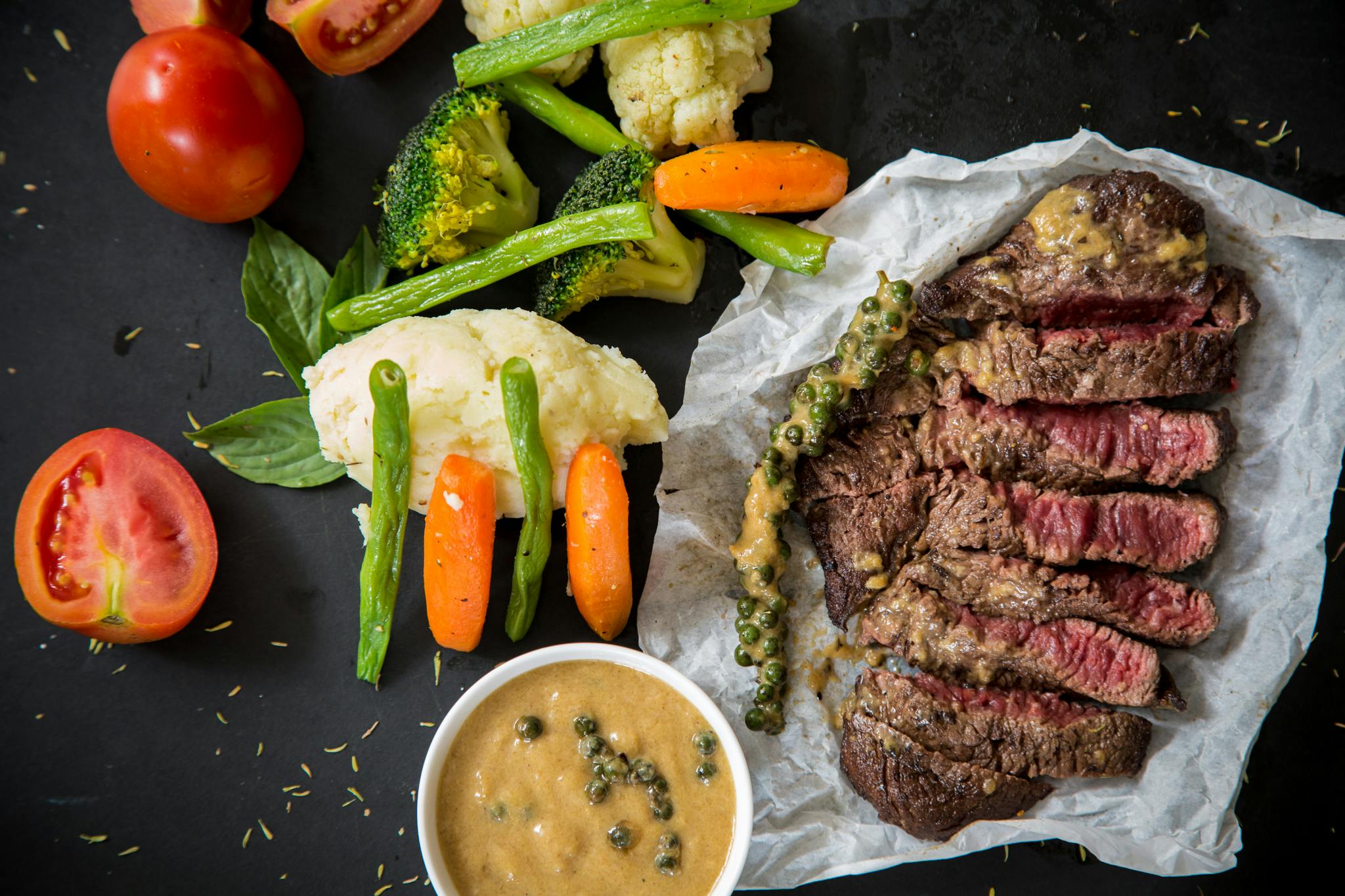
Have you ever sat at a restaurant, stared at the menu, and felt a little lost about which wine to order with your steak? Well, you’re not alone. Choosing a wine can be difficult, especially when people start throwing around fancy words or discussing tasting notes you’ve never heard of. But pairing wine with steak doesn’t need to be complicated. In fact, it can be a lot of fun.
What Is Steak, Anyway?
Before we get into the wines, let’s talk a bit about steak. A Steak typically refers to a cut of meat sliced across the muscle fibers, sometimes including a bone. Most often, steak comes from beef, but you can find all kinds of steaks these days: pork steak, fish “steaks,” and even cauliflower “steaks” for vegetarians. When we talk about “steak” here, we’re generally referring to good old-fashioned beef steak. Still, a lot of the same principles can apply to other types of steak-like cuts.
Why focus on steak? Well, it’s hearty, robust, and has this rich flavor that begs for something equally bold in your glass. Imagine a beautifully marbled ribeye, sizzling away in a hot skillet, maybe with a bit of butter and fresh herbs. It’s got savory juices and a melt-in-your-mouth texture. You need a beverage that can stand up to all that. Typically, that’s where red wine steps in like a trusty sidekick.
Red Wine and Steak: A Match Made in Culinary Heaven
You’ve probably heard a million times that red wine pairs perfectly with steak. But why is that, exactly? There’s a lot of fancy science that people throw around, and sometimes they mention things like tannins and acidity. Tannins are those compounds in wine that give you that drying sensation on your tongue, almost like someone swiped a cotton ball across it. Acidity is the brightness or tartness in the wine.
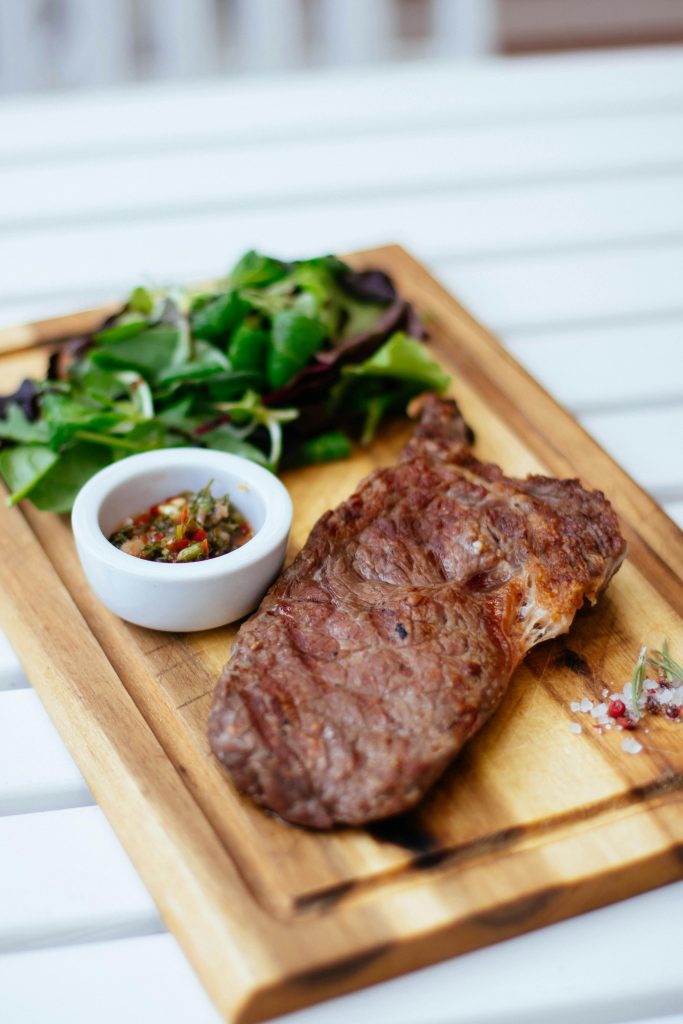
The Tannin Factor
When you’re eating a rich cut of steak, the fat in the meat helps soften the astringent sensation of the tannins. Meanwhile, the tannins in the wine help cleanse your palate of the fatty richness in the steak. It’s like a little dance happening on your tongue. The steak and wine take turns shining, so you get a balanced, enjoyable experience throughout your meal.
Anthocyanins and Color Intensity
You might also hear folks talk about color intensity in red wine. This color comes from compounds called anthocyanins, which are found in the skins of grapes. If you’ve ever wondered what are anthocyanins, they’re basically natural pigments that give red wine its signature hue, from pale ruby to deep purple-black. They also have antioxidant properties, which might be an added bonus if you’re mindful of health benefits. Plus, let’s be honest, that gorgeous deep red color in your glass is part of what makes the whole experience so satisfying.
Don’t Be Scared of Wine Lingo (Or Wine Snobs)
Sometimes people get nervous because they think only “wine snobs” or hardcore wine experts understand pairing rules. You might hear the term oenophiles pronounce tossed around, which refers to wine lovers or serious wine enthusiasts. But here’s the thing: you don’t have to be a pro to enjoy a good glass of wine with your steak. If you like it, then it’s a good pairing. Everyone’s taste buds are a little different, and that’s okay.
Red Wines That Typically Pair Well with Steak
While you can absolutely experiment with whatever wine you love best, there are some classic red wines that pair beautifully with steak. These wines are generally full-bodied, have firm tannins, and boast enough flavor to stand up to a juicy cut of beef.
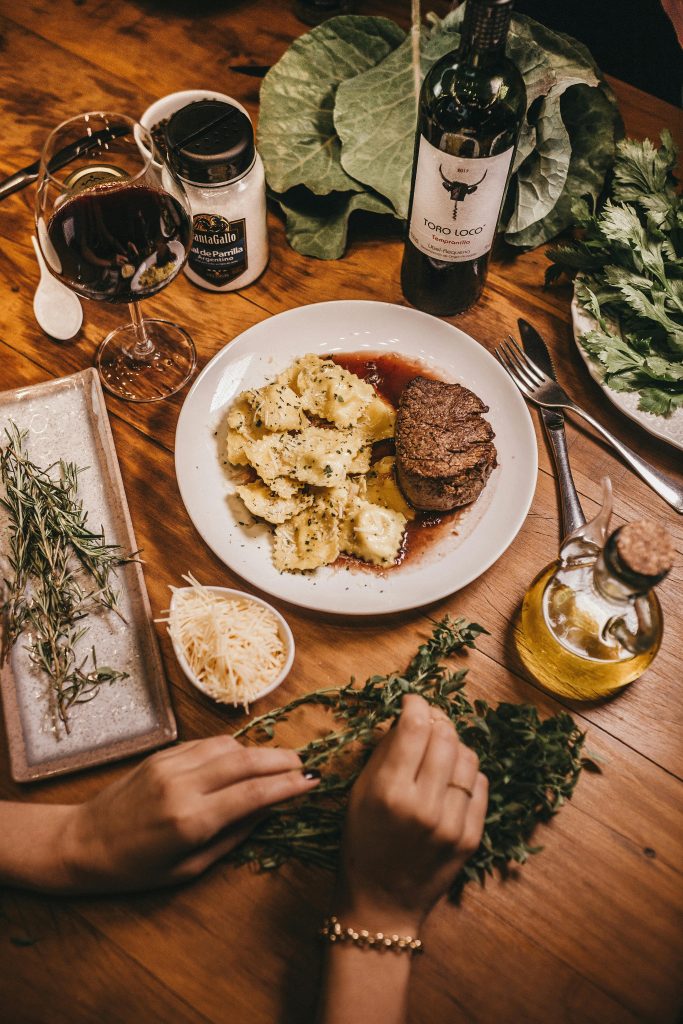
1. Cabernet Sauvignon
Cabernet Sauvignon is often considered the king of red wines. It’s bold, it’s robust, and it’s got those tannins we talked about. It usually features flavors like blackcurrant, blackberry, and a hint of oak if it’s been aged in barrels. These flavors play off the savory richness of steak. If you’re someone who loves structure and depth in wine, a Cab is a no-brainer.
2. Merlot
Merlot is a gentler cousin to Cabernet Sauvignon. It still has enough body and tannic backbone to pair well with steak, but it’s often a bit softer and fruitier. You’ll notice notes of plum, dark cherry, and sometimes chocolate. If you find Cabernet a little too intense, Merlot offers a smoother ride.
3. Malbec
Malbec is known for its velvety texture and ripe fruit flavors. It’s particularly famous in Argentina, where steak is practically a national treasure. Malbec’s plush character, along with its notes of blackberry, cocoa, and sometimes a touch of spice, makes it a solid companion for a nicely charred ribeye or skirt steak.
4. Syrah/Shiraz
Syrah (or Shiraz, depending on where it’s from) is another full-bodied red. Syrah from cooler climates can have peppery and savory notes, while warmer climate Shiraz can be more jammy and fruit-forward. Both versions do a great job of standing up to steak’s heft. You’ll often taste black pepper, smoked meats, and even a bit of licorice in a Syrah/Shiraz, which can be heavenly with a grilled or smoked steak.
5. Zinfandel
Zinfandel is full of bold, jammy fruit flavors like raspberry and blackberry, along with spicy notes of black pepper. This wine is a great option if you’re looking for something a little different but still hefty enough to match steak. It’s especially delicious if your steak has a sweet or spicy marinade or sauce.
But What If I Prefer White Wine?
You might be thinking, “What if I’m a white wine lover?” Good news: you can still sip white wine with steak! It’s true that heavier reds are more commonly recommended, but there’s no law against pairing a fuller-bodied white with a sizzling steak.
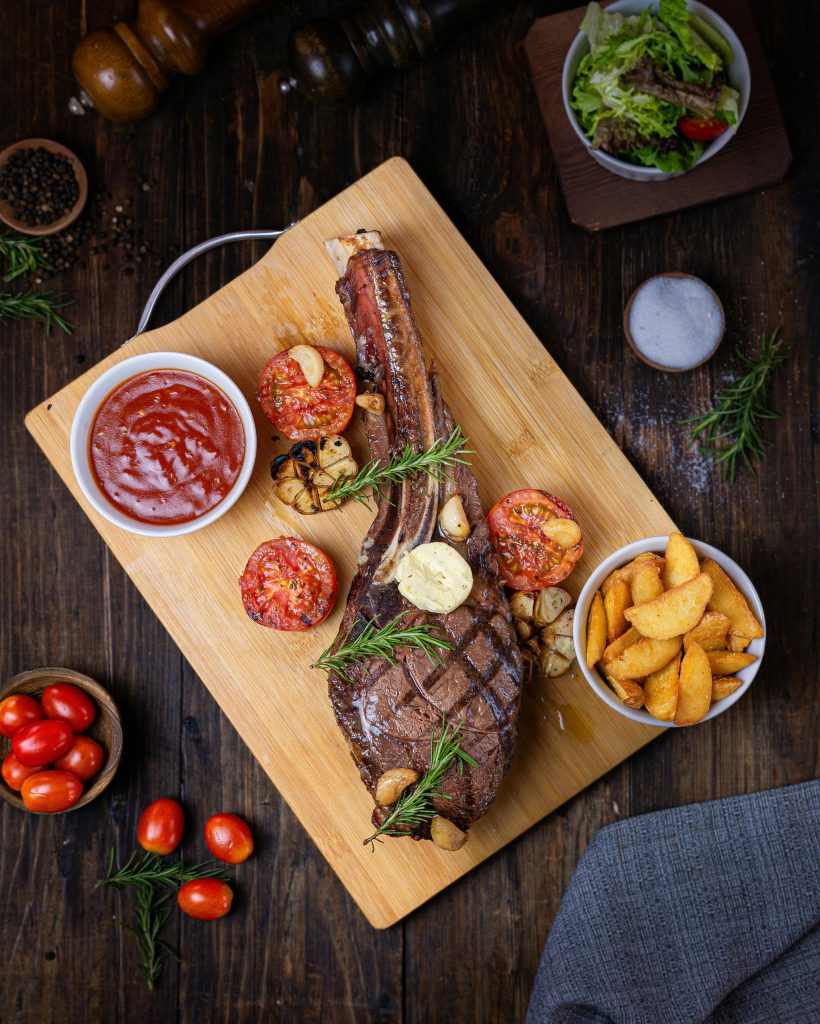
Consider These Whites:
- Chardonnay: Opt for a richer, oaked Chardonnay. It has enough body and texture, with buttery and toasted oak notes, to handle a leaner steak like filet mignon. The creamy texture of an oaked Chardonnay can complement the tenderness of the meat.
- Viognier: This aromatic white often has lush stone fruit flavors and a floral quality. While it’s not as robust as Chardonnay, Viognier can still offer a pleasing contrast to a simple, lightly seasoned steak.
Remember, the best wine pairing is the one that tastes good to you. If you love Sauvignon Blanc, give it a try! You might be surprised by how well it can cut through the richness of a marbled steak. The point is to experiment and see what you enjoy.
The Rise of Rosé (Yes, Really)
Rosé has come a long way from being seen as just a summer sipper. People drink it all year now, and for good reason. A dry rosé—especially one made from robust red grape varieties—can actually work with steak. It won’t have the same tannic punch as a classic red, but it can provide refreshing acidity and red fruit notes that complement a grilled steak, particularly if it’s on the lighter side.
Don’t dismiss rosé right away. If you’re in the mood for something crisp but still want to honor your steak with a bit of red wine flavor, a structured rosé could be your new go-to.
Cooking Methods and Sauces: Why They Matter
Pairing wine with steak isn’t just about the cut of the meat. It’s also about how you cook it and what you’re serving it with. For instance:
- Grilled Steak with Smoky Flavors: Go for a wine with some smoky or peppery notes, like Syrah or a spicy Zinfandel.
- Steak Topped with Rich Sauces (like Peppercorn or Red Wine Reduction): A bold Cabernet Sauvignon or Merlot can handle these intense flavors without getting lost.
- Herb-Crusted Steak: Look for wines with herbaceous or earthy tones—perhaps an Old World Syrah from the Northern Rhône region, or even a Bordeaux blend.
- Pan-Seared Steak in Butter: If it’s drenched in butter or a creamy sauce, a buttery Chardonnay might be delightful. It also pairs well with a plush, fruit-forward Malbec.
By matching the flavors in your dish with the flavors in your wine, you’ll create harmony on your plate and in your glass.
Quick Tips for a Perfect Pairing
- Match Weight to Weight: Lighter wines go better with lighter dishes; heavier wines are best with hearty, rich dishes.
- Don’t Overcomplicate It: If you love a certain wine, try it out. Experimenting is half the fun.
- Tannin and Fat Are Best Friends: A rich, fatty cut of steak will balance with a tannic red wine.
- Consider the Sauce: The sauce or seasoning can drastically change which wines will pair best.
- Trust Your Taste Buds: No one else has your exact palate. If you like the combo, it works.
A Handy Table for Quick Steak and Wine Pairings
To make things a bit simpler, here’s a quick reference table you can use. Think of it as a cheat sheet the next time you’re planning a steak dinner:
| Steak Cut / Preparation | Wine Recommendation | Flavor Notes |
|---|---|---|
| Ribeye (Grilled) | Cabernet Sauvignon | Bold, tannic, blackcurrant, hints of oak |
| Filet Mignon (Pan-Seared in Butter) | Oaked Chardonnay | Buttery, creamy, toasted oak |
| Sirloin (Seasoned with Herbs) | Old World Syrah (Northern Rhône) | Peppery, earthy, moderate tannins |
| T-Bone or Porterhouse (Charcoal Grill) | Malbec | Velvety, dark fruit, slight chocolate notes |
| Skirt Steak (Marinated) | Zinfandel | Jammy fruit, spicy pepper |
| Flat Iron (Lightly Seasoned) | Dry Rosé | Crisp, refreshing, subtle red fruit flavors |
Use this table as a starting point, and remember that personal preference always rules!
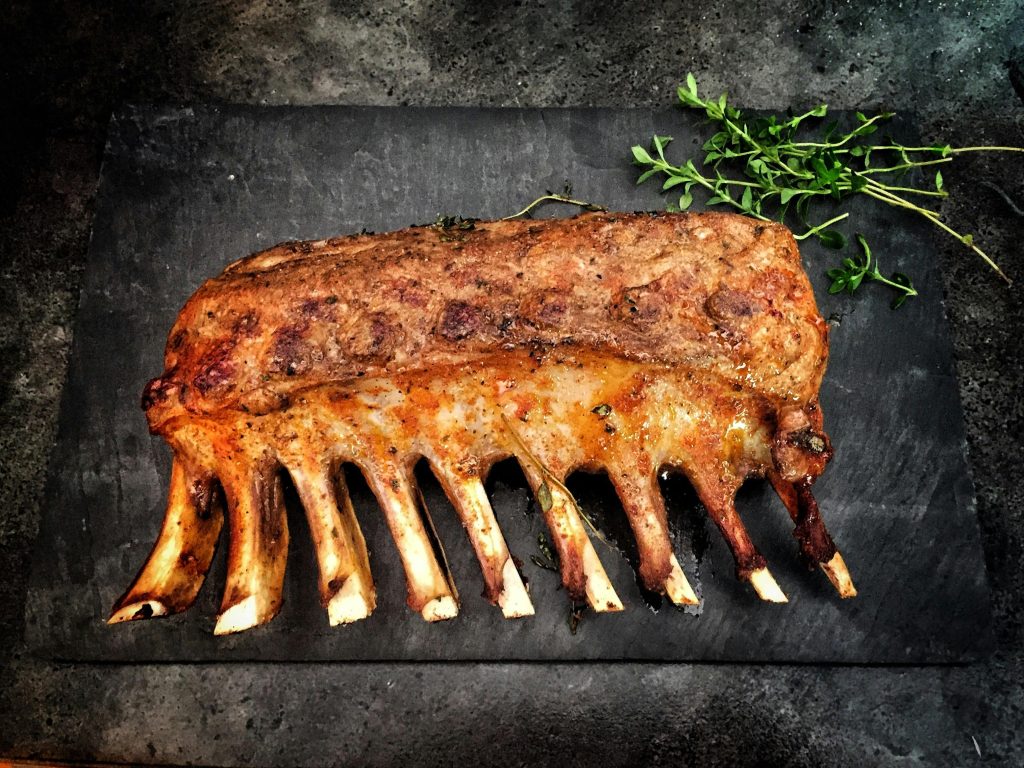
Building Your Own Steak and Wine Experience
It’s easy to get stuck in the “must-have” mindset. You might think you must have a specific wine with a certain steak. But truly, dining should be about having fun and discovering new taste combinations. Maybe you’ll find that a hearty steak with a surprisingly light Pinot Noir is just the thing for you. Or perhaps you’ll discover a new love for peppery Syrah with your old standby flank steak recipe.
Here’s a Step-by-Step Way to Experiment
- Pick a Steak Cut You Love: Maybe you’re a ribeye person, or maybe you prefer filet mignon. Start with a cut that makes you happy.
- Choose a Cooking Method: Will you grill, pan-sear, or broil? Each approach adds distinct flavors, which can guide your wine choice.
- Think About Seasoning: Are you using salt and pepper only, or adding herbs and sauces? This can either highlight or mask different wine flavors.
- Pick Two Wines to Compare: Choose one classic (like Cabernet Sauvignon for a grilled ribeye) and one you’re curious about (perhaps a Merlot or even a bold white).
- Taste Side by Side: Pour a small glass of each wine. Take a bite of steak, then a sip of one wine, note your impressions, and repeat with the other wine.
- Discuss and Enjoy: If you’re with friends, share what you liked and didn’t like. If you’re on your own, jot down mental notes for next time.
By being curious and open-minded, you might stumble upon some incredible food and wine combos you never expected.
Avoiding the Snob Factor
One reason many people feel uneasy about wine is the fear of coming off as a snob or being judged. But wine is for everyone. You don’t need to swirl your glass and sniff dramatically if you don’t want to. You don’t have to pick out notes of “freshly cut garden hose” or “sun-ripened blackberries in a cedar chest.” It’s enough to notice what you like—or don’t like—and go from there.
If a server or a friend starts rattling off terms you’re unfamiliar with, feel free to ask for a simpler explanation. Most of the time, people are happy to share and can break things down in regular, everyday language. After all, the goal is to enjoy yourself, not to stress about whether you’re using the correct terminology.
Final Thoughts
Pairing wine with steak is a timeless tradition, but it doesn’t have to follow strict rules. Yes, certain combos are tried and true. A hearty Cabernet Sauvignon with a grilled ribeye is a classic for a reason. But remember, there are all sorts of delicious possibilities out there. White wine can work. Rosé can work. It’s all about finding the flavors you personally love.
Next time you’re cooking—or going out for—a great steak dinner, let your curiosity guide you. Maybe you’ll pick a wine you’ve never had before, or maybe you’ll stick to a favorite. Either way, you’ll have a great time experimenting. After all, food and wine are meant to bring joy and bring people together. So enjoy every moment, every drop of wine and every bite of your steak.
Looking for more wine and food pairings? Visit our wine and food pairing page.